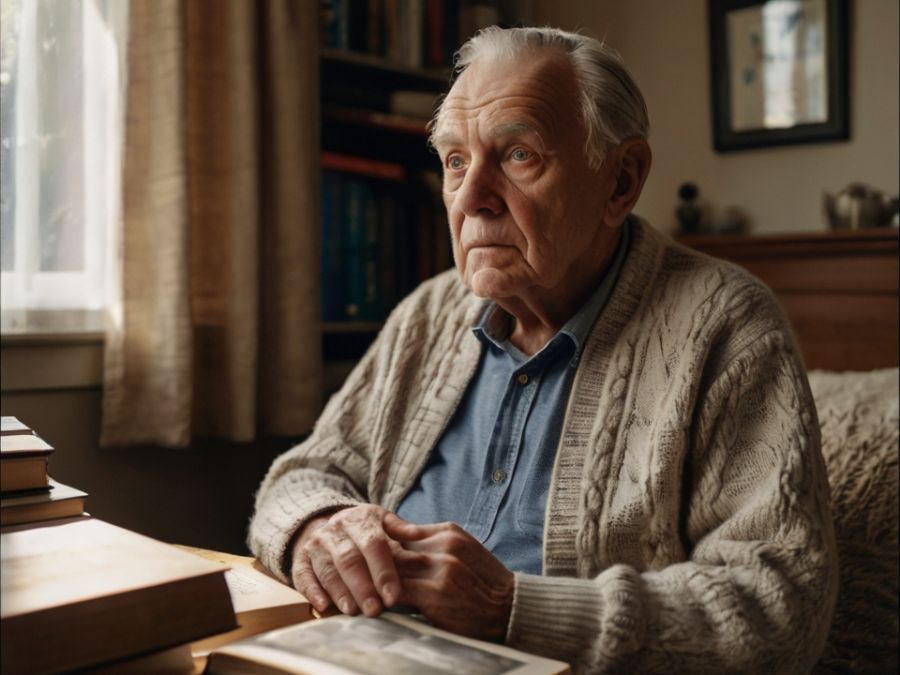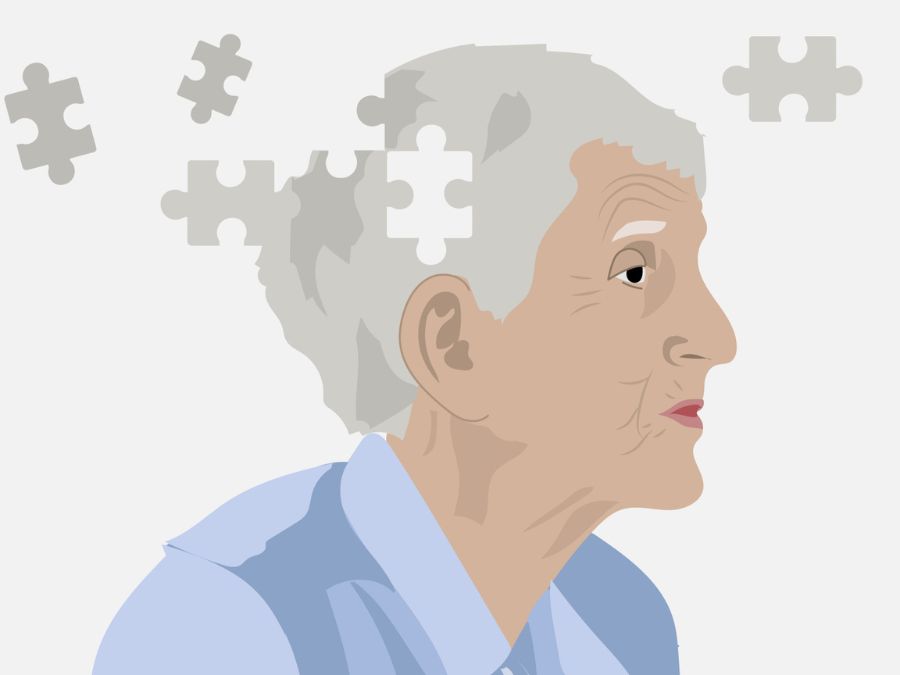Autism and Dementia: Understanding the Overlap of Conditions

Chapter 1: What Are Autism and Dementia?
Understanding Autism Spectrum Disorder (ASD)
Autism Spectrum Disorder (ASD) is a lifelong neurodevelopmental condition that affects communication, social interaction, sensory processing, and behavior. While it is often identified during childhood, autism in adults and older individuals is becoming increasingly recognized, especially with the rise in late diagnoses.
People with autism may:
- Struggle with understanding social cues
- Prefer routine and structure
- Exhibit intense focus on specific interests
- Be highly sensitive to sounds, lights, or textures
It’s important to remember that autism is a spectrum, meaning each individual presents a unique combination of characteristics and support needs.
Understanding Dementia

Dementia, on the other hand, is a neurodegenerative syndrome characterized by a progressive decline in cognitive function. It affects memory, language, reasoning, and the ability to perform daily tasks.
There are several types of dementia, the most common being:
- Alzheimer’s disease
- Vascular dementia
- Lewy body dementia
- Frontotemporal dementia
While dementia is more common in older adults, it is not a normal part of aging. It results from brain damage that interferes with a person’s ability to function independently.
Chapter 2: When Autism and Dementia Coexist

Why This Overlap Matters
As the population of adults with autism ages, researchers and families have started noticing a concerning overlap between autism and dementia. But here lies the challenge: autism can mask the early signs of dementia, and dementia can mimic or worsen traits already present in autism.
This overlap poses difficulties in:
- Diagnosis and identification
- Providing appropriate care
- Ensuring quality of life
- Supporting caregivers and families
Is It Autism Getting Worse or Dementia Starting?
This is one of the most complex clinical questions. A person with autism may suddenly:
- Lose previously acquired skills
- Show increased confusion or disorganization
- Withdraw from social contact
- Forget routines or appointments
- Exhibit personality changes
Such changes may be interpreted as a “worsening” of autism when, in fact, they may signal the onset of dementia.
Chapter 3: Challenges in Diagnosis

Why Diagnosing Dementia in Autistic Individuals Is So Complex
Diagnosing dementia in people with autism is an intricate process. Traditional diagnostic tools for dementia are not designed for neurodivergent individuals. As a result, many early symptoms may be missed or misunderstood.
Challenges include:
- Baseline differences in communication and behavior due to autism
- Lack of validated diagnostic criteria for older autistic adults
- Clinicians’ unfamiliarity with autism in aging populations
- Overlapping symptoms such as memory lapses, difficulty with daily routines, or social withdrawal
A major barrier is the assumption that autism does not change over time, when in fact, the expression of autism can evolve — especially in the presence of another neurological condition like dementia.
The Importance of a Multidisciplinary Evaluation
Proper diagnosis requires collaboration between:
- Neurologists
- Geriatric psychiatrists
- Neuropsychologists
- Speech and occupational therapists
- Autism specialists
Additionally, family members and caregivers play a vital role by providing behavioral histories and noticing subtle changes over time.
Chapter 4: Symptoms Shared by Both Conditions

Autism and Dementia – Similar or Different?
While fundamentally distinct, autism and dementia can share a number of surface-level traits:
| Symptom | Autism | Dementia |
|---|---|---|
| Repetitive behaviors | Common | May appear |
| Memory issues | Occasionally present | Core feature |
| Communication difficulties | Common | Progressive loss |
| Difficulty with daily tasks | Due to executive functioning differences | Due to cognitive decline |
| Social withdrawal | Can be a preference | Often caused by confusion or fear |
These similarities can lead to misdiagnosis or delayed treatment, especially if the individual is nonverbal or has limited self-awareness.
Key Differences to Note
- Dementia typically involves a decline from a previously higher level of functioning
- Autism traits usually remain stable over time unless another condition interferes
- Dementia brings new confusion, disorientation, or emotional volatility
Recognizing these distinctions helps avoid inappropriate interventions and ensures more compassionate care.
Chapter 5: Who Is at Higher Risk?
Are Autistic People More Likely to Develop Dementia?
Emerging research suggests that older adults with autism may indeed be at greater risk of developing dementia than neurotypical individuals.
Key risk factors include:
- Chronic stress and sensory overload, which impact the brain’s long-term health
- Sleep disorders, which are more common in autism and linked to cognitive decline
- Social isolation, which contributes to both depression and brain aging
- Untreated co-occurring conditions like anxiety or epilepsy
A 2022 study from the University College London found that autistic adults are three times more likely to develop dementia, particularly when other neurological or psychiatric conditions are present.
Chapter 6: Real-Life Stories and Case Studies
Stories from the Frontline
Case 1: John, age 68
Diagnosed with autism at 45, John lived independently with a structured routine. Around age 65, he began to forget familiar streets and missed appointments. His family noticed he repeated stories excessively and showed signs of confusion. After a thorough assessment, he was diagnosed with early-onset Alzheimer’s.
Case 2: Rosa, age 73
A lifelong autistic woman with excellent memory began losing track of time and misplacing belongings. Her speech became fragmented. Her caregivers initially attributed these changes to “aging with autism,” but neurological tests confirmed vascular dementia.
These stories underscore the importance of early recognition and culturally sensitive care tailored to neurodivergent individuals.
Chapter 7: Impact on Daily Life

How the Overlap Affects Independence and Routine
For many autistic individuals, daily routines are vital for emotional stability and functioning. The onset of dementia, however, disrupts these structures in a disorienting and sometimes distressing way.
Common challenges include:
- Forgetting established routines
- Difficulty preparing meals or managing medications
- Confusion with time and place
- Sudden resistance to personal care
- Increased reliance on caregivers
When these issues arise, it’s crucial to provide predictable, low-stimulation environments that reduce anxiety and support autonomy as much as possible.
Emotional Toll on the Individual
People living with both conditions may experience:
- Frustration and self-doubt
- Anxiety from losing control
- Emotional withdrawal
- Difficulty articulating distress or needs
Empathy, patience, and trauma-informed care approaches are essential to reduce suffering and preserve dignity.
Chapter 8: Supporting Caregivers

The Role of Caregivers in Dual Diagnoses
Caring for someone with both autism and dementia presents a unique set of emotional, physical, and logistical demands. Caregivers must navigate complex behaviors, emotional regulation issues, and cognitive decline simultaneously.
Key stressors include:
- Communication barriers
- Unexpected mood changes
- Sleep disturbances
- Lack of specialized resources or training
Caregivers benefit from:
- Respite care options
- Support groups specific to autism and dementia
- Clear routines and visual schedules
- Access to mental health support for themselves
Building a Network of Support
Family members, clinicians, therapists, and community programs all play a role in maintaining quality of life. Interdisciplinary collaboration helps ensure no aspect of care is overlooked.
Chapter 9: Evidence-Based Interventions

What Science Tells Us About Managing This Overlap
Though research is still emerging, several interventions have shown promise in managing symptoms of autism and dementia concurrently.
- Cognitive Behavioral Therapy (CBT) – When adapted for autism, CBT can help manage anxiety and depression.
- Sensory regulation therapy – Reduces overload and promotes calmness.
- Music and art therapy – Stimulate memory, improve mood, and foster self-expression.
- Speech-language therapy – Maintains communication for longer.
- Occupational therapy – Helps individuals adapt to changing abilities.
Pharmacological approaches should be used with caution, given the sensory sensitivities and atypical responses often seen in autistic individuals.
Technological Aids
Assistive technologies such as:
- Wearable memory aids
- Reminder apps
- Smart home devices
can increase autonomy and reduce caregiver burden.
Chapter 10: Creating Inclusive Care Models

Rethinking Elder Care for Neurodiverse Populations
Traditional elder care settings are often ill-equipped to support neurodivergent residents. The sensory environment, rigid schedules, and lack of specialized staff can lead to distress and deterioration.
A truly inclusive model would include:
- Autism-friendly spaces (quiet zones, lighting control, sensory rooms)
- Staff trained in autism and dementia care
- Flexible routines and personalized activities
- Ongoing collaboration with families and therapists
These changes not only enhance well-being but also reduce behavioral crises and emergency interventions.
Chapter 11: Policy, Research, and Advocacy
Where We Are and Where We Need to Go
The intersection of autism and dementia is still vastly under-researched. Most aging studies exclude autistic participants, and most autism studies focus on children.
We urgently need:
- Longitudinal studies tracking autistic adults into later life
- Policy frameworks supporting aging neurodivergent individuals
- Medical guidelines for differential diagnosis
- Increased funding for dual-diagnosis care centers
Advocacy organizations and self-advocates are beginning to push for greater inclusion of older autistic voices in research and public policy — a critical step toward equity in aging.
Chapter 12: Moving Forward with Hope

A Message to Families and Caregivers
Living with both autism and dementia is undeniably challenging, but it is not without hope. Every person’s journey is unique. With the right support, empathy, and planning, it’s possible to preserve joy, dignity, and connection through the later stages of life.
Practical tips:
- Keep routines simple and visual
- Focus on strengths, not losses
- Use plain, calm language
- Offer reassurance often
- Don’t hesitate to ask for help — you’re not alone
A Message to Professionals
Healthcare providers, researchers, and social service teams must acknowledge the growing number of older adults with autism. Building truly inclusive, scientifically sound, and compassionate systems is both a professional responsibility and a moral one.
Conclusion
Understanding the overlap between autism and dementia is a growing necessity in today’s aging population. As awareness increases and research evolves, we can ensure better lives for those navigating both conditions.
This article aimed to shine a light on a subject that is still too often overlooked — and to offer real, practical solutions grounded in empathy, evidence, and human dignity.







